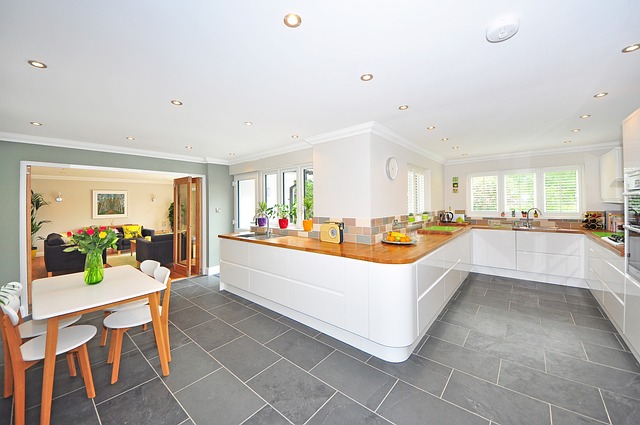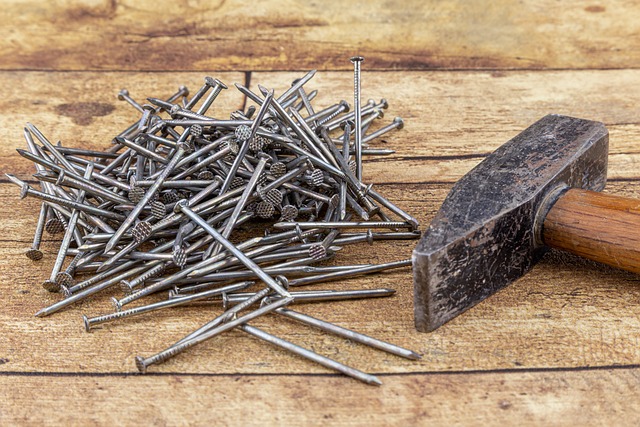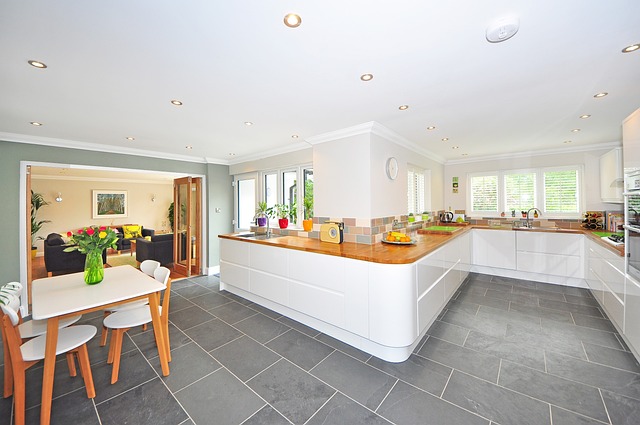During kitchen renovations, it's crucial to evaluate and upgrade your plumbing system to support new appliances and ensure water pressure, prevent leaks, and avoid corroded pipes. This includes assessing current plumbing conditions, sizing pipes correctly, installing individual shut-off valves for each fixture, and possibly upgrading the water heater. Modern kitchens often include advanced fixtures like instant hot water taps and built-in coffee stations that require robust plumbing systems. Updating to PEX or CPVC piping, integrating smart valves, and implementing leak detection systems can enhance both efficiency and safety in your home's plumbing. These upgrades not only ensure compatibility with new appliances but also contribute to energy efficiency, sustainability, and long-term cost savings. In the realm of kitchen renovations, prioritizing a comprehensive plumbing overhaul is essential for optimal performance, convenience, and water conservation. Keyword: Kitchen Renovations.
Kitchen renovations often involve updating appliances and fixtures, but it’s crucial to ensure your plumbing infrastructure can support these new additions. This article guides you through assessing your current plumbing system, upgrading where necessary, and optimizing for efficiency in your updated kitchen layout. Whether you’re installing a state-of-the-art dishwasher or a water filtration system, understanding the needs of modern kitchen technology is key to a seamless renovation experience.
- Assessing Your Kitchen's Plumbing Infrastructure for Renovation
- Upgrading Plumbing Systems to Accommodate Modern Appliances and Fixtures
- Ensuring Efficiency and Compatibility in Your Updated Kitchen Layout
Assessing Your Kitchen's Plumbing Infrastructure for Renovation

When planning kitchen renovations, it’s crucial to evaluate your existing plumbing infrastructure to accommodate new appliances and fixtures effectively. Outdated pipes or inadequate water pressure can hinder the functionality of modern dishwashers, ice makers, and water filtration systems. Homeowners should consider the capacity and condition of their water supply lines and drainage systems. Assessing the current setup allows for identifying potential issues such as leaks, corroded pipes, or insufficient water flow that could lead to inefficiencies or even damage during the renovation process. It’s advisable to conduct a thorough inspection or consult with a professional plumber before making any decisions. This ensures that the plumbing system can support the installation of new appliances without complications, thereby enhancing the kitchen’s overall performance and aesthetics as part of your kitchen renovations.
Upgrading your kitchen through renovations isn’t just about changing cabinetry or countertops; it involves a comprehensive approach to include the plumbing system. Modern kitchens often incorporate complex fixtures like instant hot water taps, built-in coffee stations, and multi-cycle dishwashers, which necessitate a robust and updated plumbing infrastructure. To support these additions, proper sizing of pipes, the installation of water shut-off valves at each fixture, and potential upgrades to the water heater are essential steps. These measures ensure that your kitchen renovations not only meet the current demands but also stand the test of time, providing a reliable and efficient plumbing system for years to come.
Upgrading Plumbing Systems to Accommodate Modern Appliances and Fixtures

As homeowners increasingly opt for modern, energy-efficient appliances and fixtures as part of kitchen renovations, the demand for updated plumbing systems has risen accordingly. Older homes, in particular, often have plumbing infrastructure that is ill-equipped to handle the higher water flow rates and advanced technology of contemporary dishwashers, refrigerators with built-in ice and water dispensers, and high-efficiency faucets. Upgrading these systems is not merely a matter of compatibility; it’s about ensuring the longevity and safety of the home’s plumbing. The introduction of flexible gallon-per-minute fixtures, for instance, can significantly reduce water usage while providing the necessary pressure for today’s appliances. Moreover, updating to PEX (Polyethylene oxide) or CPVC (Chlorinated Polyvinyl Chloride) piping offers a durable and cost-effective solution over traditional copper pipes, as they are less prone to corrosion and offer greater flexibility in design and installation. These advancements not only support the functionality of kitchen renovations but also contribute to a more sustainable and efficient home environment. Incorporating smart valves and leak detection systems as part of the plumbing upgrade can further enhance the safety and efficiency of the home’s water usage, making it a prudent investment for any homeowner considering kitchen renovations that include modern appliances and fixtures.
Ensuring Efficiency and Compatibility in Your Updated Kitchen Layout

When embarking on kitchen renovations, homeowners often focus on the aesthetic and functional aspects of new appliances and fixtures. However, a critical yet frequently overlooked element is ensuring that the plumbing infrastructure supports these updates efficiently and compatibly. Updating plumbing to accommodate modern appliances not only enhances their performance but also safeguards against potential leaks or water waste. For instance, integrating flexible supply lines for refrigerators and dishwashers can prevent kinks and improve water flow. Similarly, installing high-efficiency faucets and sinks can reduce water usage significantly. In the realm of kitchen layout updates, it’s crucial to consider the location of water shut-off valves. Positioning these valves for easy access can simplify maintenance tasks and minimize the impact of any leaks or malfunctions. Additionally, upgrading to smart water devices can provide homeowners with real-time monitoring and control over their water usage, further contributing to efficiency. Properly planning and executing plumbing updates during kitchen renovations ensures that your new appliances and fixtures operate at peak performance while conserving water and reducing utility costs. It’s a prudent investment that pays off in the long run by promoting sustainability and convenience within one of the most used spaces in any home.
When embarking on kitchen renovations, upgrading plumbing systems is a pivotal step to ensure compatibility with modern appliances and fixtures. This article has outlined the importance of assessing your existing plumbing infrastructure, the strategies for upgrading to meet contemporary demands, and maintaining efficiency in your updated layout. By integrating these considerations into your renovation plan, homeowners can enjoy the full benefits of state-of-the-art kitchen appliances and fixtures, enhancing both functionality and aesthetic appeal. With careful planning and attention to detail, your kitchen will not only reflect the latest in design trends but also serve as a practical hub for years to come.
